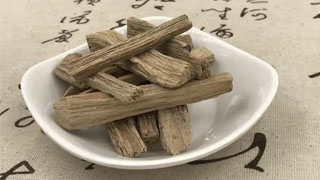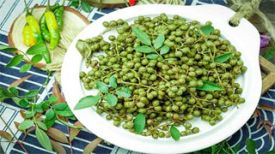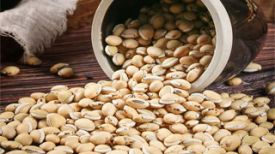
1. Aliases
White wood fragrance, earth agarwood fragrance, daughter fragrance, honey fragrance, stack fragrance, jueshui fragrance, qinan fragrance, and ganan fragrance.2. Plant morphology
Evergreen large tree, up to 15 meters high, with a fragrant aroma. The bark is grayish brown, and the young branches are covered with soft hairs. Leaves alternate; The leaves are leathery, long ovate, inverted ovate or elliptical in shape, with the apex gradually pointed and glossy. The base is wedge-shaped, entire, and the underside and petiole are covered with pubescence, gradually becoming hairless. Umbelliform inflorescences are terminal and axillary, and both the total and small flower stems are covered with gray white hairs; Flower yellow green, covered with fuzzy fur; The perianth is bell shaped, with 5 lobes at the apex of the perianth tube and elongated lobes. The throat of the perianth tube has 10 scales, densely covered with white hairs; 10 stamens, inserted at the throat of the perianth tube, with extremely short or absent filaments; Ovary superior, ovate. Capsule woody, flattened obovate, drooping, densely covered with gray hairs, with persistent perianth. 1 seed with angular appendages at the base. The flowering period is from March to May, and the fruiting period is from May to June.
3. Habitat distribution
Born in sparse forests, acidic yellow soil or barren mountains on flat or hilly soil ridges, it is cultivated. Distributed in Guangdong, Hainan, Guangxi, Taiwan and other places.
4. Harvesting and processing
It can be harvested all year round. Cut the wood containing resin, remove the non resin parts, and dry it in the shade.
5. Characteristics of medicinal herbs
The agarwood medicinal herbs appear in irregular blocks, flakes, or helmet shaped shapes, some of which are small fragments. The surface is uneven, with knife marks and occasional holes. Spots of black brown resin and yellow white wood can be seen, and the surface of the holes and pits is mostly in the shape of decayed wood. The texture is relatively solid and the cross-section is prickly. The aroma is fragrant and the taste is bitter.
6. Nature, taste, and meridian tropism
Spicy and bitter in taste, with a slightly warm nature. Gui Kidney Meridian, Spleen Meridian, and Stomach Meridian.
7. Effect and function
Exercise qi to relieve pain, warm the middle and stop vomiting, and absorb qi to relieve asthma. It belongs to the category of regulating qi medicine.
8. Clinical applications
Take the final product with a dosage of 1.5-4.5 grams. It can also be taken by grinding the original medicine into juice. It is advisable to add the decoction later. Used to treat chest and abdominal distension, pain, stomach cold, vomiting, hiccup, kidney deficiency, qi reflux, and asthma.
9. Pharmacological research
Agarwood can relieve intestinal smooth muscle spasms and inhibit the central nervous system. The decoction of agarwood has the effect of inhibiting the spontaneous contraction of isolated guinea pig ileum, and can resist the spastic contraction caused by histamine and acetylcholine. Alcohol extracts can promote the anti histamine effect of isolated guinea pig trachea, thereby exerting an anti asthmatic effect. In addition, it has antispasmodic, sedative, analgesic, antihypertensive, and antibacterial effects.
10. Chemical composition
Agarwood contains volatile oils and resins. The main components in volatile oil are agarwood spironol, white wood aromatic acid, white wood aromatic aldehyde, white wood aromatic alcohol, dehydrogenated white wood aromatic alcohol, white wood aromatic fural, white wood aromatic furanol, alpha agarwood aromatic furan, beta agarwood aromatic furan, anisic acid, and other components; The volatile oil of agarwood infected with Aspergillus contains agarwood spironoids, agarwood spironoids, and aldehydes.
11. Taboos for use
Those with yin deficiency, excessive fire, or qi deficiency and depression should use it with caution.
12. Compatibility prescription
1. Treatment for abdominal distension, asthma, and restlessness: 15 grams each of agarwood and Fructus Aurantii, 30 grams stir fried radish seeds, 15 grams per serving, three slices of ginger, boiled in water. ("Red Water Mysterious Pearl" Chenxiang Drink)
2. Treatment of Cold Phlegm Deficiency and Heat, Various Labor Cold and Heat: Agarwood and Aconite (Pao). Take a sip, fry the dew overnight, and wear a hollow robe. (Cold Fragrant Soup from "Danliao Collection Verification Formula")
3. Treatment for all types of asthma: 60g agarwood, 150g radish seeds (washed, steamed, sun dried), with fine powder on top and ginger juice as fine pills. Take eight cents per serving, and send the white rolling soup. (The Two Immortal Pills in the "Dan Tai Yu Case")
4. Treatment for stomach coldness: 3 grams each of agarwood, perilla, and white cardamom. At the end. Take 1.5-2.1 grams of persimmon root soup per serving. ("The Lively Heart")
5. To treat restlessness, confusion, and lack of happiness, the fire does not decrease, and there is occasional vibration and jumping. To dispel yin and nourish fire, the whole heart qi is as follows: 60 grams of Fu Shen (peeled) and 15 grams of agarwood. And for fine powder, refining honey balls as big as small beans. Take thirty pills each, and after eating, add ginseng soup, which is very delicious. (Zhu Que Wan in "Bai Yi Xuan Fang")
6. Treatment of cellular obstruction or excessive tolerance for urination can lead to recovery. Non diuretic drugs can also be used: 6 grams of agarwood and 6 grams of wood incense each are used as the end. Take the white soup on an empty stomach to pass. ("Yi Lei Yuan Rong")
The content of the article is for clinical reference only. Non professionals in traditional Chinese medicine are not allowed to try medication.


